🌍 Mapping Youth Unrest in 2025

In 2025, a new generation is raising its voice. Across continents, from Kathmandu to Casablanca, young people are demanding opportunity, transparency, and dignity. The global map of youth unrest isn’t drawn in borders — it’s shaped by frustration, digital control, and the economics of everyday life.
🔒 Freedom and Control: The Digital Divide
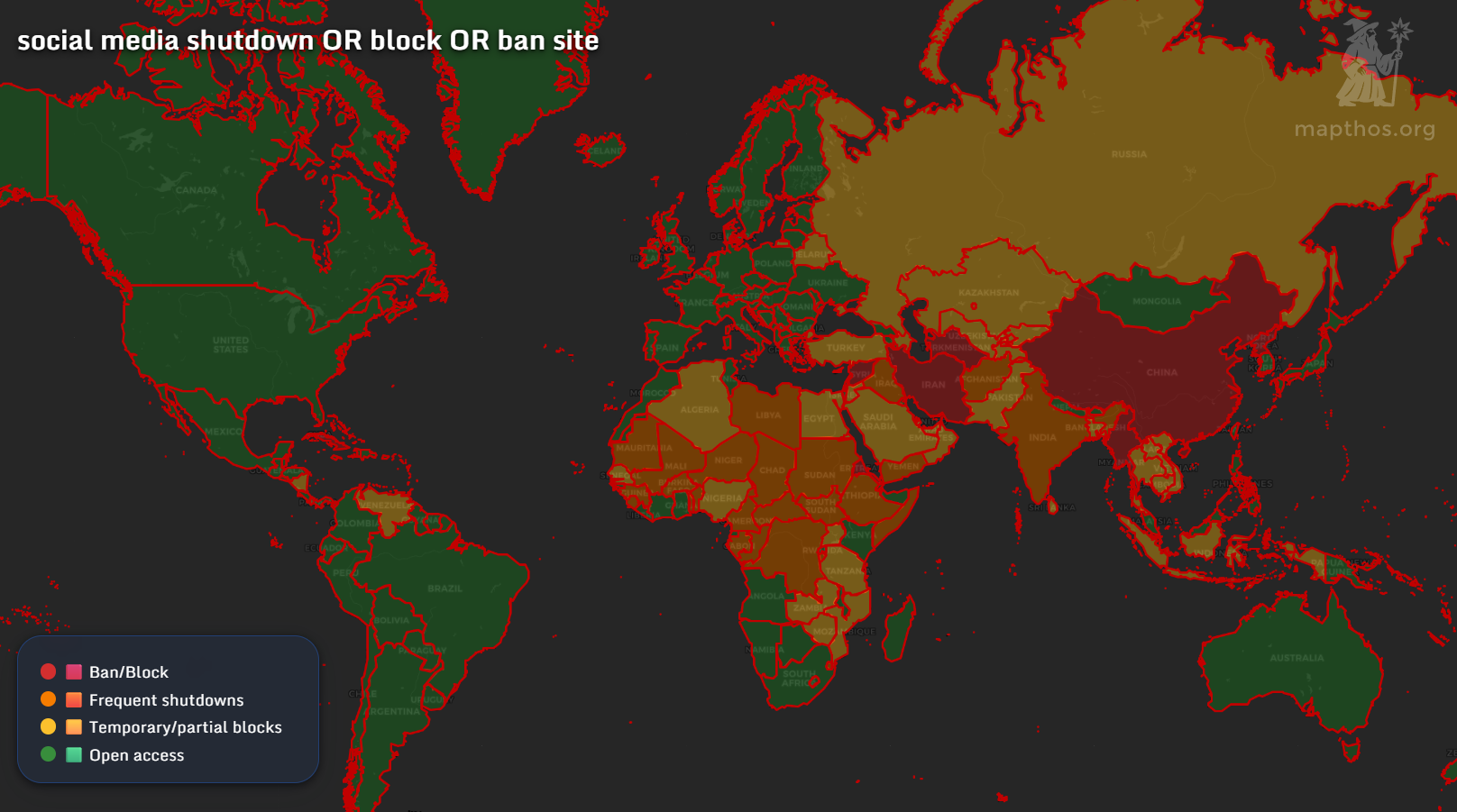
While some nations thrive in open digital ecosystems, others restrict them. This social media shutdowns map shows that across Asia, the Middle East, and parts of Africa, internet control is no longer exceptional — it’s routine. China, Iran, and Myanmar remain under complete bans, while India and Turkey face frequent temporary shutdowns.
In contrast, Europe and the Americas — largely marked in green — retain open access, allowing digital activism to flourish. The link between connectivity and collective voice is clear: where the web closes, anger moves offline.
💰 Economic Strain Beneath the Surface
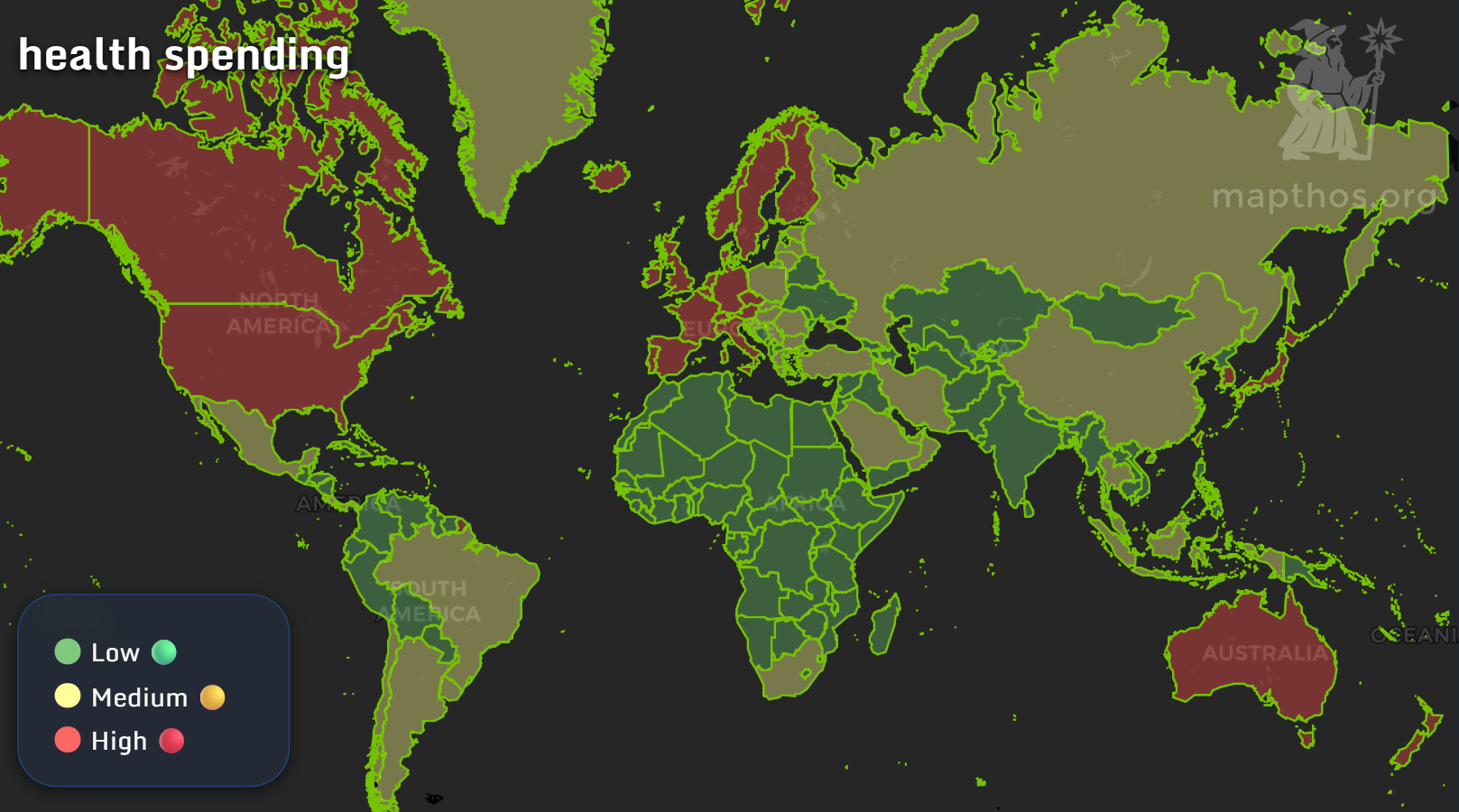
Economic and health disparities fuel dissatisfaction. This health spending map reveals the imbalance: North America, Western Europe, and Australia spend heavily on healthcare — shown in deep red — while Africa, South Asia, and parts of Latin America remain under-resourced.
When combined with unemployment and limited safety nets, these inequalities harden into resentment. The young often feel this gap most sharply — they live in the statistics.
🧭 Patterns of Protest: The Global Similarity Map
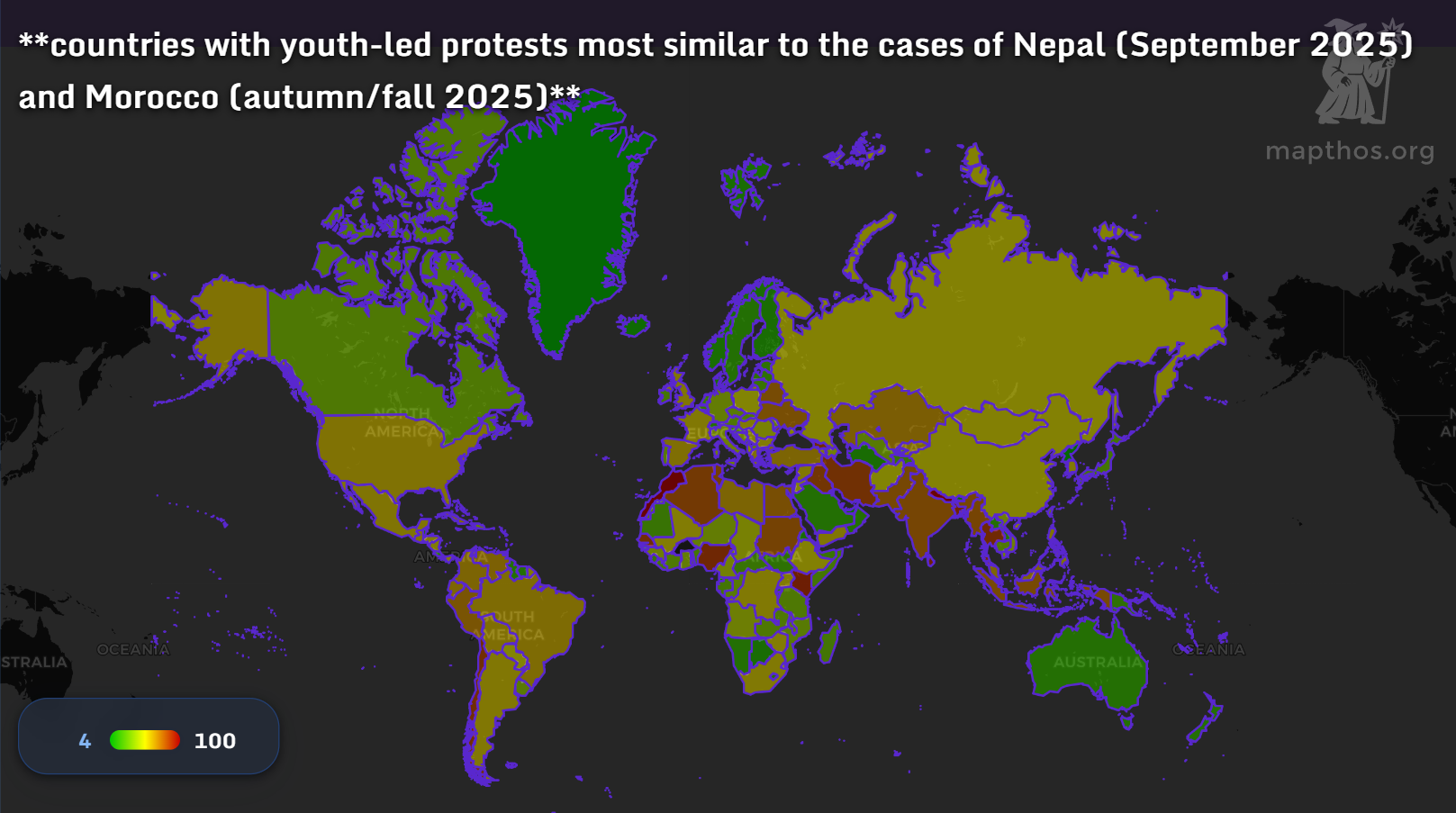
Using data correlations from Nepal (September 2025) and Morocco (Autumn 2025), MAPTHOS analyzed where similar youth-led protests could emerge next. The results show potential hotspots — from West Africa and Southeast Asia to Eastern Europe.
These are nations where economic hardship, censorship, and demographic youth bulges align — a volatile combination mirrored in recent demonstrations.
🇲🇦 Morocco: A Generation Between Frustration and Hope
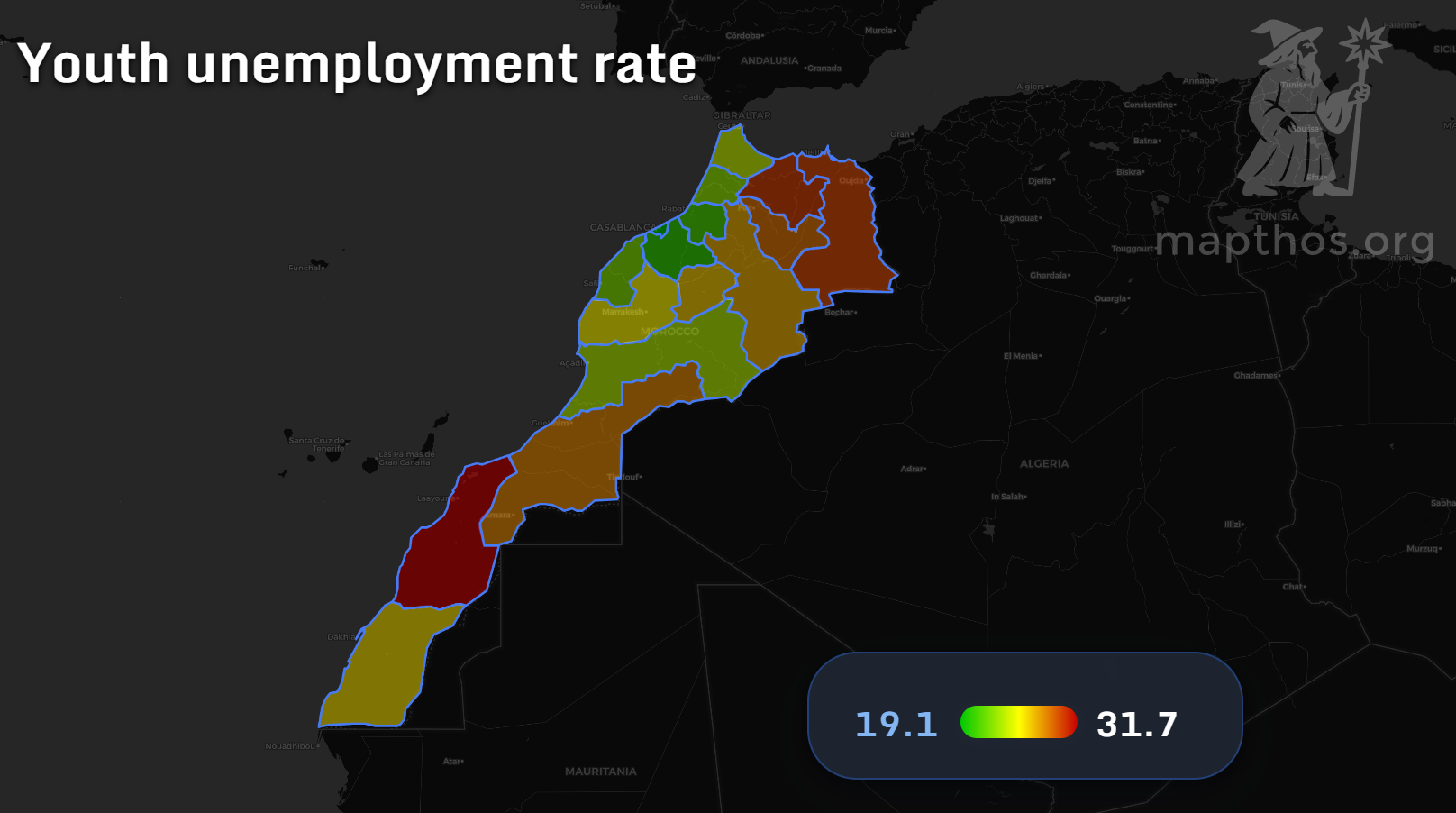
In Morocco, youth unemployment exceeds 30% in several regions — particularly the South and East. The lack of local opportunity has turned frustration into collective action.
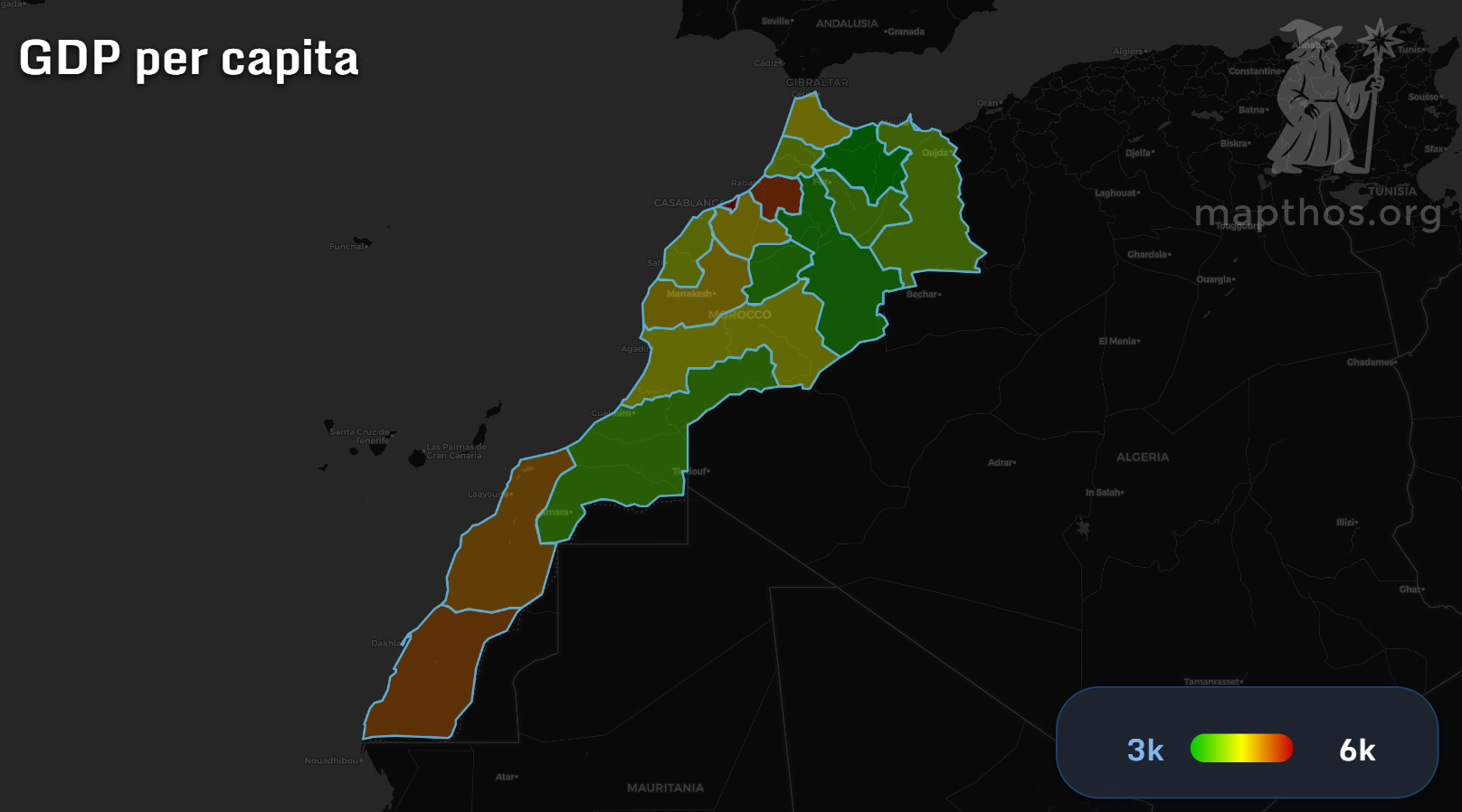
The country’s GDP per capita map shows a north-south divide: urban centers like Casablanca and Rabat remain wealthier, while peripheral provinces lag behind. This imbalance often transforms economic tension into political energy — and eventually, protest.
🇳🇵 Nepal: Economic Gaps and Digital Awareness
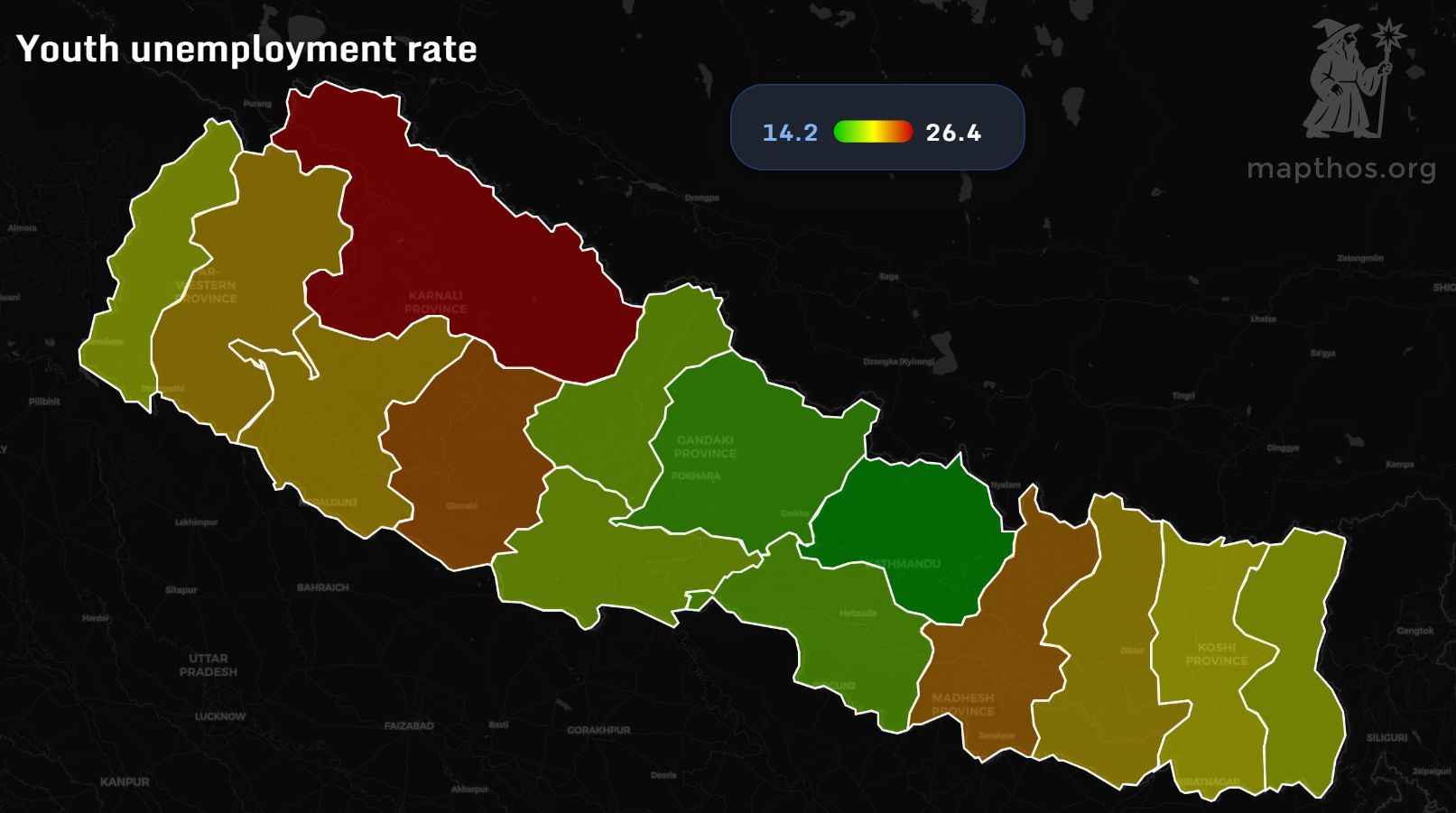
In Nepal, unemployment among youth runs between 14% and 26%, with rural western provinces hardest hit. Urban youth, meanwhile, are more digitally connected and globally aware — seeing opportunities abroad that feel unreachable at home.
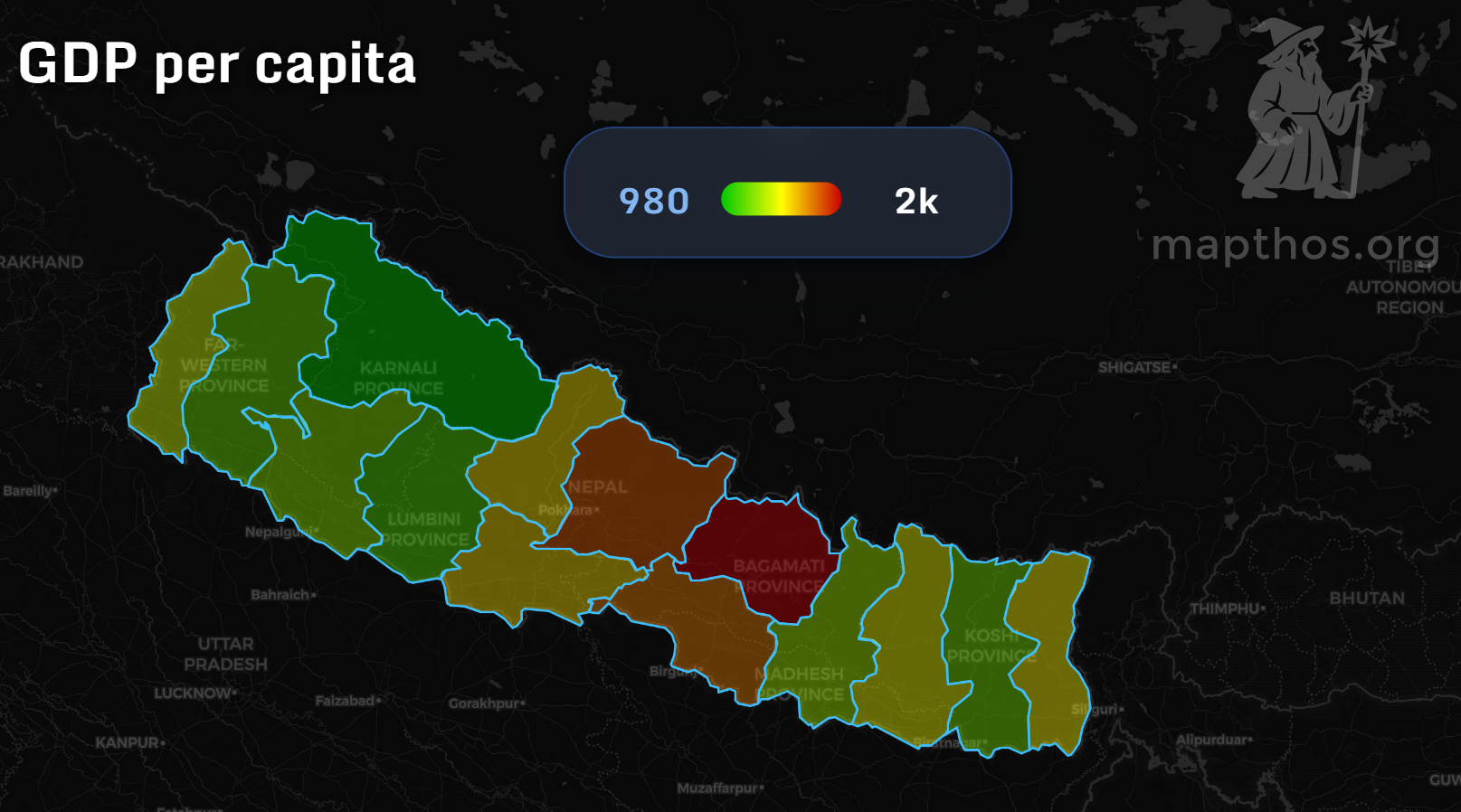
The GDP per capita gradient mirrors this divide. Regions like Bagmati (home to Kathmandu) stand far above others, suggesting an economy centralizing wealth but not distributing it. For many, the problem isn’t just poverty — it’s inequality they can now see, share, and discuss online.
🌐 The Pattern Behind the Protests
The MAPTHOS comparative analysis suggests that youth unrest in 2025 is less about ideology — and more about access. Access to work. Access to health. Access to expression. When those are denied or unevenly distributed, the maps begin to glow red.
Youth frustration is global, but it’s also connected. Each protest may start local, yet their data patterns — unemployment, censorship, spending inequality — form a recognizable global signature.
👉 Explore more at app.mapthos.org
See the world. Map better. Dream big. 🌍✨